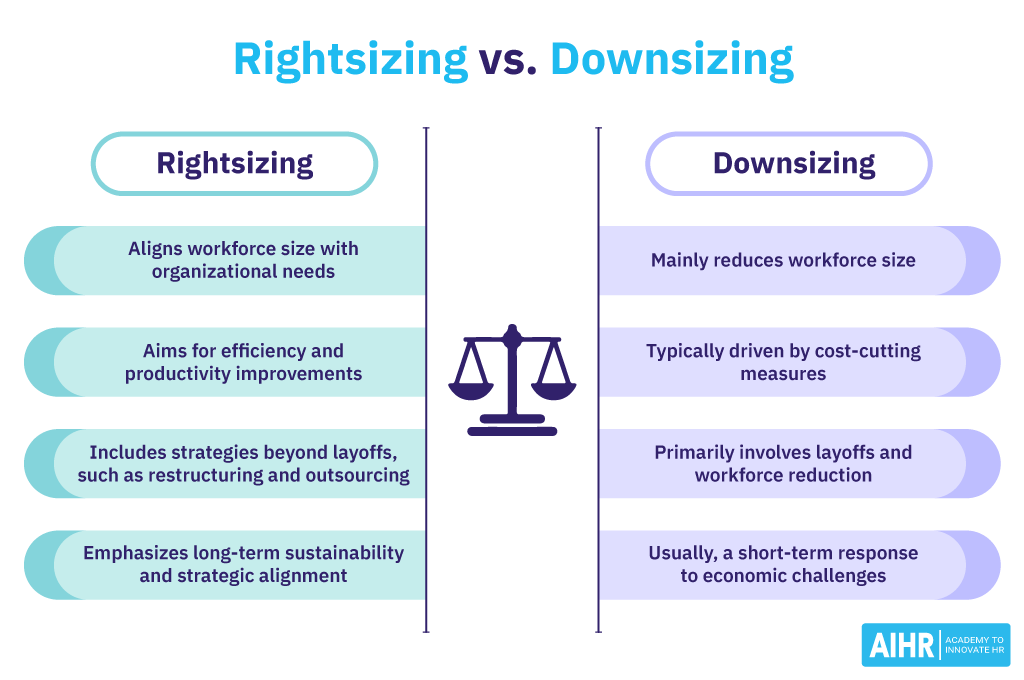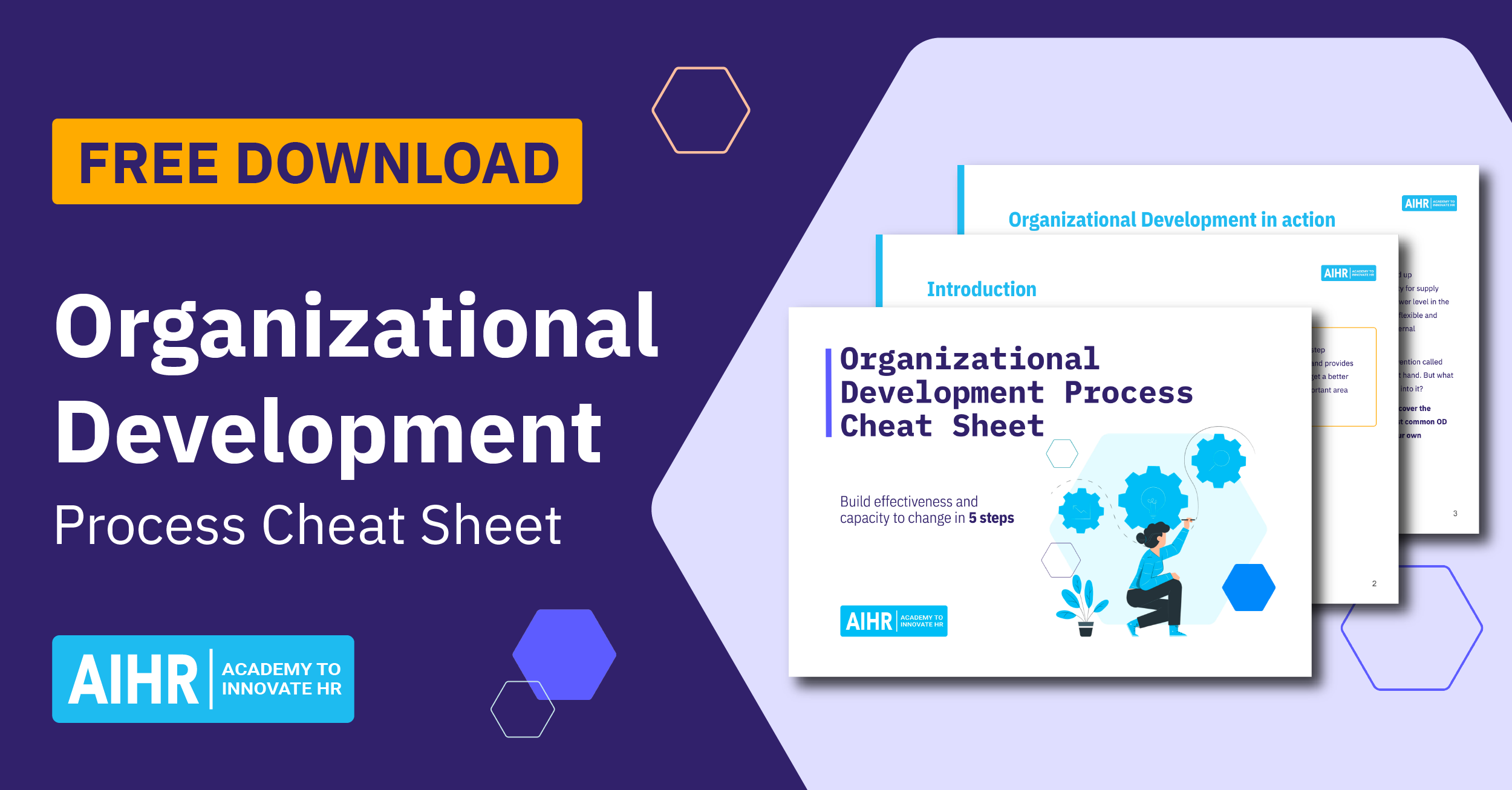Rightsizing
What is rightsizing?
Rightsizing is a strategic approach to managing an organization’s workforce in line with its business needs. It focuses on achieving optimal efficiency, productivity, and adaptability. Unlike downsizing, which simply reduces workforce size, rightsizing involves various methods to create a well-balanced and effective organizational structure.
Rightsizing vs. downsizing
Although the terms “rightsizing” and “downsizing” are often used interchangeably, they have distinct meanings in the field of human resources.
Aligns workforce size with organizational needs
Mainly reduces workforce size
Aims for efficiency and productivity improvements
Typically driven by cost-cutting measures
Includes strategies beyond layoffs, such as restructuring and outsourcing
Primarily involves layoffs and workforce reduction
Emphasizes long-term sustainability and strategic alignment
Usually, a short-term response to economic challenges

Advantages and disadvantages of rightsizing
Benefits
- Cost reduction: It optimizes resources, leading to savings in terms of salaries, benefits, and operational expenses.
- Improved efficiency: By aligning the workforce with organizational goals, it enhances efficiency and productivity, reducing redundancy and improving workflows.
- Better resource allocation: It enables effective resource allocation so that each role contributes significantly to the company’s success.
- Increased competitiveness: An appropriately sized and skilled workforce enhances the organization’s competitiveness by fostering agility and adaptability.
- Strategic alignment: It also supports strategic initiatives, ensuring that the workforce is aligned with the company’s long-term goals.
Limitations
- Lower employee morale: It often creates uncertainty and anxiety among employees, leading to lower morale and declines in productivity.
- Negative employer brand: Repeated rightsizing initiatives can harm the organization’s reputation as an employer of choice, making it challenging to attract top talent.
- Legal risks: If not executed carefully, it can lead to legal challenges, especially if employees feel the process was unfair or discriminatory.
- Resistance and disruption: Employees may resist changes associated with rightsizing, causing disruptions in the workplace and affecting team dynamics.
Different rightsizing methods
Organizations use various methods to implement rightsizing:
- Organizational restructuring: Redesigning the organizational hierarchy, roles, and reporting structures to better align with strategic goals.
- Layoffs: Selectively reducing the workforce based on performance, skills, or departmental needs.
- Outsourcing: Transferring certain business functions or tasks to external service providers to achieve cost savings.
- Hiring freezes: Temporarily suspending new hires to manage the workforce size and expenses.
- Early retirement packages: Offering incentives for eligible employees to retire early, facilitating a voluntary reduction in the workforce.
Rightsizing analyses
A rightsizing analysis involves evaluating the organization’s structure and needs. Two key types of analysis are:
- Ratio analysis: Assessing the current employee-to-work ratio to identify areas of overstaffing or understaffing.
- Activity analysis: Examining each role’s specific functions and tasks to determine their necessity and contribution to organizational goals.
How to rightsize your organization: 6 steps
Successfully navigating the rightsizing process requires a systematic approach:
- Conduct workforce analysis: Evaluate current staffing levels, skills, and competencies to identify gaps and redundancies.
- Identify strategic priorities: Align rightsizing efforts with the organization’s strategic goals and priorities.
- Determine optimal organizational structure: Redesign the organizational structure to enhance efficiency and effectiveness.
- Develop a plan: Create a comprehensive plan that outlines the methods, timelines, and communication strategies for rightsizing.
- Design a communication strategy: Communicate transparently with employees about the reasons, the process, and the support available.
- Track implementation and adapt as needed: Continuously monitor the implementation of the rightsizing plan, making adjustments as necessary based on feedback and evolving organizational needs.
HR tip
Maintaining open and transparent communication is paramount. Acknowledge the impact on employees and provide support throughout the process.







